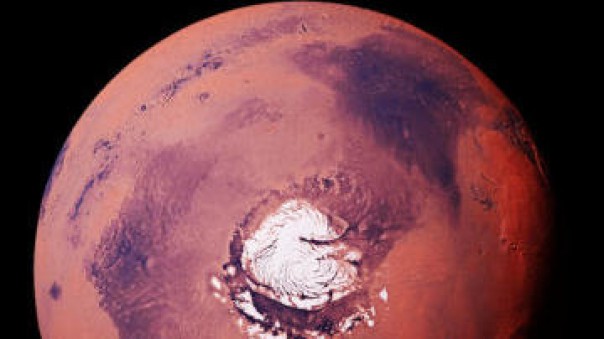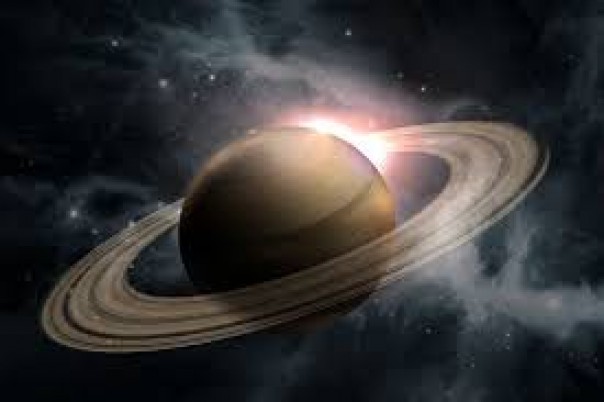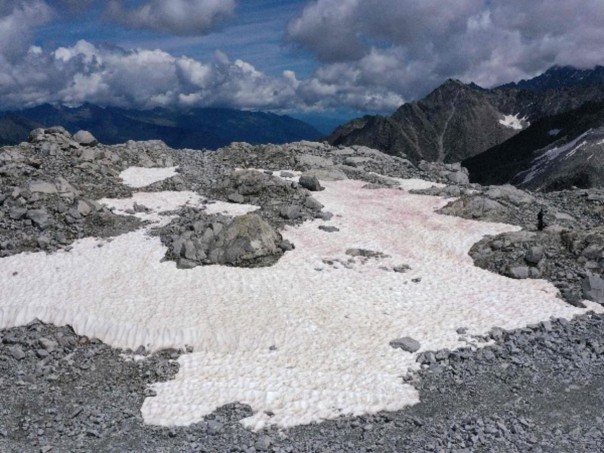Early Mars Was Covered in Ice Sheets, Not Flowing Rivers
 Mars
Mars
A large number of the valley networks scarring Mars’s surface were carved by water melting beneath glacial ice, not by free-flowing rivers as previously though.
Read more: NASA points out that the origin of the rings of Saturn is still a mystery
The findings effectively throw cold water on the dominant “warm and wet ancient Mars” hypothesis, which postulates that rivers, rainfall, and oceans once existed on the red planet.
Read more: NASA points out that the origin of the rings of Saturn is still a mystery
To reach this conclusion, lead author Anna Grau Galofre, former Ph.D. student in the department of earth, ocean, and atmospheric sciences, developed and used new techniques to examine thousands of Martian valleys. She and her co-authors also compared the Martian valleys to the subglacial channels in the Canadian Arctic Archipelago and uncovered striking similarities.
Read more: NASA points out that the origin of the rings of Saturn is still a mystery
“For the last 40 years, since Mars’s valleys were first discovered, the assumption was that rivers once flowed on Mars, eroding and originating all of these valleys,” says Grau Galofre. “But there are hundreds of valleys on Mars, and they look very different from each other. If you look at Earth from a satellite you see a lot of valleys: some of them made by rivers, some made by glaciers, some made by other processes, and each type has a distinctive shape. Mars is similar, in that valleys look very different from each other, suggesting that many processes were at play to carve them.”
Read more: NASA points out that the origin of the rings of Saturn is still a mystery
The similarity between many Martian valleys and the subglacial channels on Devon Island in the Canadian Arctic motivated the authors to conduct their comparative study. “Devon Island is one of the best analogs we have for Mars here on Earth–it is a cold, dry, polar desert, and the glaciation is largely cold-based,” says co-author Gordon Osinski, a professor in Western University’s department of earth sciences and Institute for Earth and Space Exploration.
Read more: NASA points out that the origin of the rings of Saturn is still a mystery
In total, the researchers analyzed more than 10,000 Martian valleys, using a novel algorithm to infer their underlying erosion processes. “These results are the first evidence for extensive subglacial erosion driven by channelized meltwater drainage beneath an ancient ice sheet on Mars,” says co-author Mark Jellinek, a professor in UBC’s department of earth, ocean, and atmospheric sciences. “The findings demonstrate that only a fraction of valley networks match patterns typical of surface water erosion, which is in marked contrast to the conventional view. Using the geomorphology of Mars’ surface to rigorously reconstruct the character and evolution of the planet in a statistically meaningful way is, frankly, revolutionary.”
Read more: NASA points out that the origin of the rings of Saturn is still a mystery
Grau Galofre’s theory also helps explain how the valleys would have formed 3.8 billion years ago on a planet that is further away from the sun than Earth, during a time when the sun was less intense. “Climate modeling predicts that Mars’ ancient climate was much cooler during the time of valley network formation,” says Grau Galofre, currently a SESE Exploration Postdoctoral Fellow at Arizona State University. “We tried to put everything together and bring up a hypothesis that hadn’t really been considered: that channels and valleys networks can form under ice sheets, as part of the drainage system that forms naturally under an ice sheet when there’s water accumulated at the base.”
Read more: NASA points out that the origin of the rings of Saturn is still a mystery
These environments would also support better survival conditions for possible ancient life on Mars. A sheet of ice would lend more protection and stability of underlying water, as well as providing shelter from solar radiation in the absence of a magnetic field–something Mars once had, but which disappeared billions of years ago.
Read more: NASA points out that the origin of the rings of Saturn is still a mystery
While Grau Galofre’s research was focused on Mars, the analytical tools she developed for this work can be applied to uncover more about the early history of our own planet. Jellinek says he intends to use these new algorithms to analyze and explore erosion features leftover from very early Earth history.
Read more: NASA points out that the origin of the rings of Saturn is still a mystery
“Currently we can reconstruct rigorously the history of global glaciation on Earth going back about a million to five million years,” says Jellinek. “Anna’s work will enable us to explore the advance and retreat of ice sheets back to at least 35 million years ago–to the beginnings of Antarctica, or earlier–back in time well before the age of our oldest ice cores. These are very elegant analytical tools.”
-
 Jul 26, 2020 | 07:20 am LT
Jul 26, 2020 | 07:20 am LTAfter the Pandemic, the Population of Bees in the ...
-
 Jul 25, 2020 | 10:50 am LT
Jul 25, 2020 | 10:50 am LTNASA points out that the origin of the rings of Sa...
-
 Jul 22, 2020 | 04:34 pm LT
Jul 22, 2020 | 04:34 pm LTThe study suggests coronavirus can spread through ...
-
 Jul 10, 2020 | 04:53 pm LT
Jul 10, 2020 | 04:53 pm LTResearch has shown that COVID-19 may also result i...
-
 Jul 08, 2020 | 04:44 pm LT
Jul 08, 2020 | 04:44 pm LTMore than a third of the world's countries are run...
-
 Jul 08, 2020 | 04:40 pm LT
Jul 08, 2020 | 04:40 pm LTClimate change is being seen all over the world, h...

-
 Aug 16, 2020 | 05:06 am LT
Aug 16, 2020 | 05:06 am LTAttack of Racism; Give Salute in the style of Nazi...
-
 Aug 09, 2020 | 11:50 am LT
Aug 09, 2020 | 11:50 am LTViral Story of an old woman in Indramayu who almos...
-
 Aug 09, 2020 | 10:55 am LT
Aug 09, 2020 | 10:55 am LTMark Zuckerberg has joined the world's most exclus...
-
 Aug 09, 2020 | 10:45 am LT
Aug 09, 2020 | 10:45 am LTRevealed! It turns out that this is the origin of ...
-
 Aug 09, 2020 | 10:42 am LT
Aug 09, 2020 | 10:42 am LTSevere! A Woman in South Tangerang is Raped After ...
-
 Aug 09, 2020 | 09:34 am LT
Aug 09, 2020 | 09:34 am LTDor! This Man's Intestine Explodes After Eating A ...




